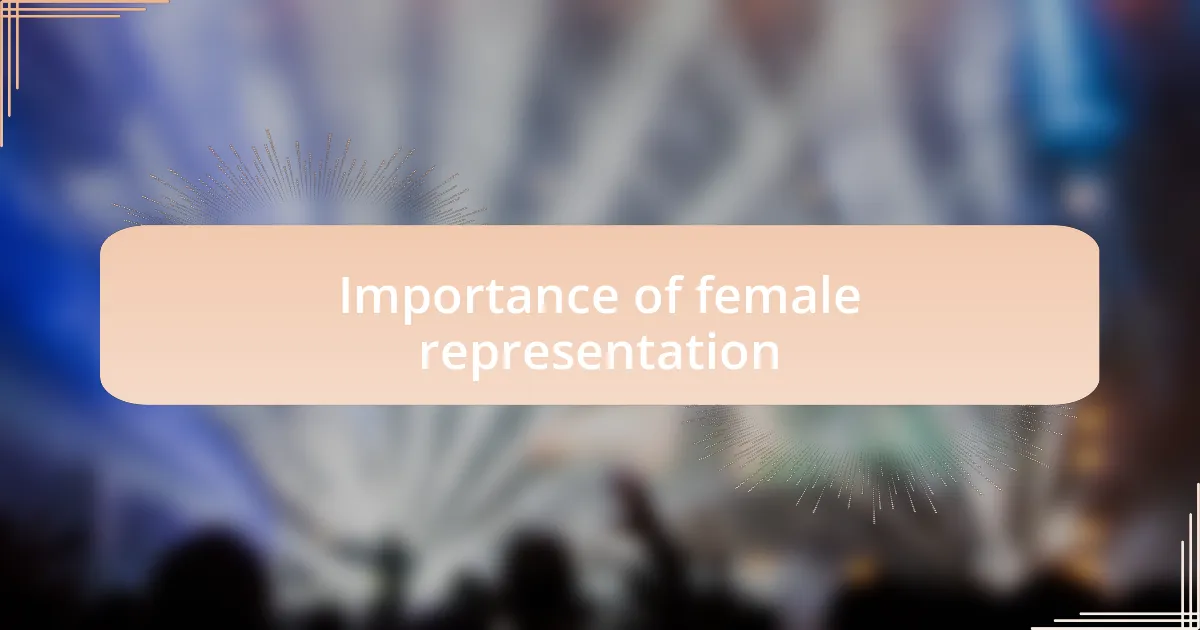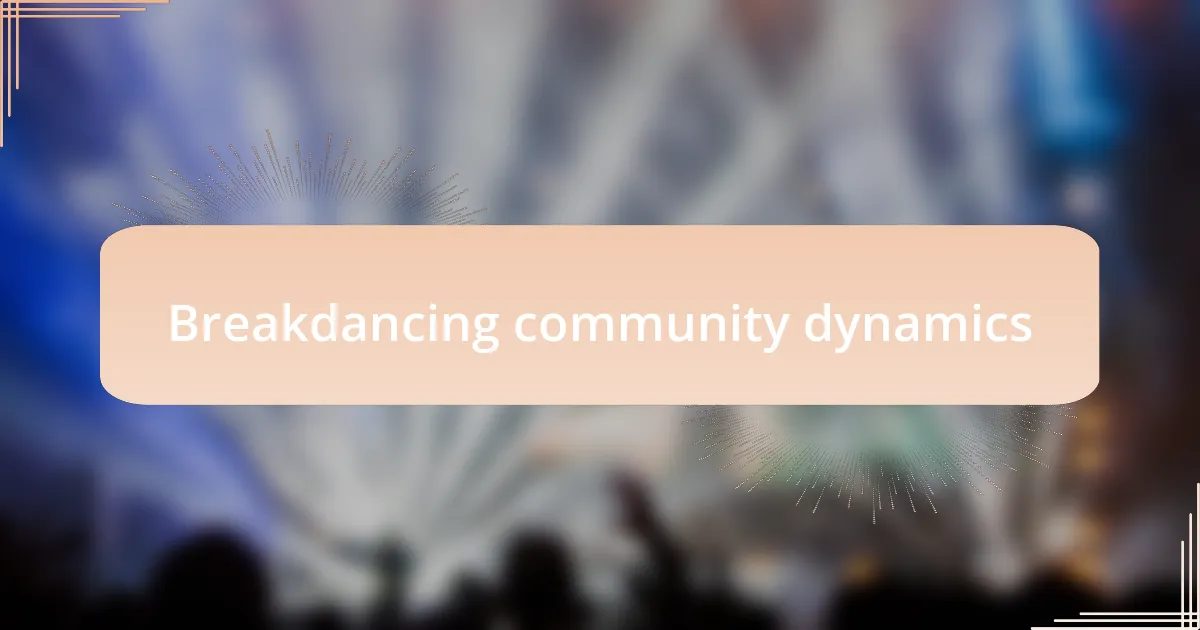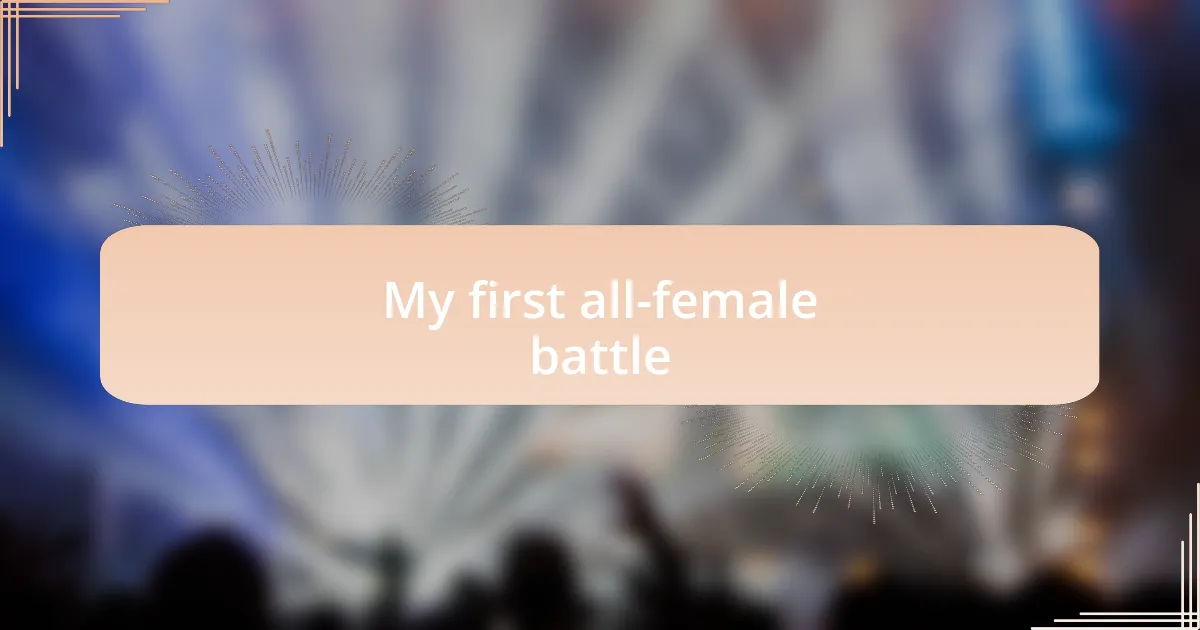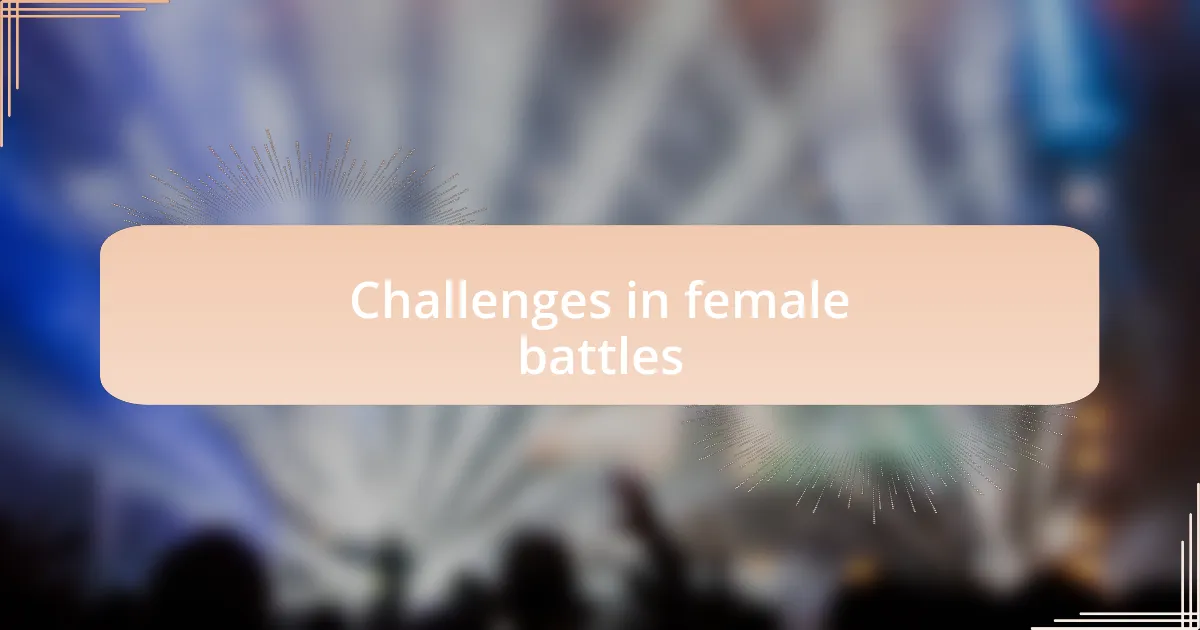Key takeaways:
- All-female battles serve as empowering platforms for female dancers to showcase their artistry and foster community support.
- Female representation in breakdancing is essential for inspiring young dancers and challenging stereotypes within the art form.
- Participants experience both the joy of camaraderie and the pressure of competition, highlighting the emotional complexity of these events.
- Key lessons include the value of vulnerability, collaboration, and the impact of authentic self-expression in dance.

Understanding all-female battles
All-female battles create a unique space where women can express their artistry without the pressures often felt in mixed-gender competitions. I recall my first experience watching one of these battles; the energy in the room was palpable as the female b-boys and b-girls showcased their talent unapologetically. It made me wonder, what would the dance world look like if women had more platforms like this?
These events not only highlight talent but foster a sense of community and empowerment among female dancers. I’ve seen competitors turn into supporters, cheering each other on and celebrating their victories together. This camaraderie raises a fundamental question: how does the presence of all-female spaces in breakdancing influence the next generation of female artists?
By focusing solely on women, these battles challenge traditional narratives and push the boundaries of what is possible in breakdancing. I’ve experienced firsthand the exhilarating mix of creativity and competition, where every move tells a story. In these moments, I realized that understanding these battles goes beyond just the dance; it’s about recognizing the journey and growth that come from stepping into the spotlight.

Importance of female representation
Female representation in breakdancing is crucial for shaping perceptions and empowering young dancers. I remember the first time I saw a female b-girl take the stage solo; the jaws dropped, and the room erupted in applause. It was a moment that reinforced my belief in the power of visibility—when young girls see women owning the floor, they’re more likely to believe they can, too.
Moreover, representation in these battles sends a clear message: women’s contributions to breakdancing are not just valid but essential. I think back to a workshop I attended where an all-female panel spoke about their experiences. Their stories of struggle and triumph resonated with many in the audience, and I couldn’t help but think—how many aspiring dancers have gone unrecognized simply because they didn’t see themselves in the spotlight?
When we amplify female voices in breakdancing, we enrich the culture as a whole. In my view, it’s not just about numbers but about the narratives we weave through dance. Each win for a female dancer inspires others to explore their potential and redefine what success looks like in this art form. Isn’t it time we all advocate for more inclusive spaces?

Breakdancing community dynamics
The dynamics within the breakdancing community are fascinating and ever-evolving. I recall my first encounter with an all-female jam; it was a beautiful blend of skill and support. Dancers lifted each other up, celebrating every move, which made me realize how powerful solidarity can be in a space often dominated by competitiveness.
Within these dynamics, mentorship plays a vital role. I had the privilege of being guided by a seasoned b-girl who, with every lesson, not only taught me techniques but also instilled a strong sense of confidence in my abilities. It’s moments like this that remind me how essential it is to foster relationships that uplift rather than diminish. Why wouldn’t we want to build a nurturing environment for the next generation of dancers?
Interestingly, these community interactions often challenge traditional norms. I remember participating in a cypher where all the dancers—regardless of gender—shared their unique styles without hesitation. This open exchange sparked creativity and inspiration, breaking down barriers that typically limit individual expression. Can we imagine a breakdancing scene where everyone feels free to express themselves without fear? That’s the dynamic I strive for.

My first all-female battle
My first all-female battle was an experience I’ll never forget. Walking into the venue, I felt a rush of anticipation and a hint of nervousness. The energy was infectious; you could feel the excitement in the air as women from diverse backgrounds prepared to showcase their skills. I remember fixing my hair and taking deep breaths, drawing strength from the knowledge that this wasn’t just about competition but a celebration of our collective artistry.
As the battle began, I was amazed by the camaraderie among the dancers. Every time a b-girl hit the floor, the crowd erupted in cheers, and I found myself getting swept up in the momentum. There was something genuinely empowering about watching my peers not just compete but uplift one another after every round. I couldn’t help but wonder: why does this sense of unity feel so different from other battles I’ve been part of?
When it was my turn to battle, I felt both exhilaration and vulnerability. In that moment, I wasn’t just fighting for a title; I was representing my tribe. The support I received as I spun and popped reminded me of the bonds we share. I realized that this was more than just a dance; it was a testament to our strength and resilience. How can we not celebrate that?

Challenges in female battles
Challenges in female battles often stem from the pressure to prove ourselves in a male-dominated space. I remember one particular battle where I felt the weight of expectations on my shoulders, as if each move had to be flawless to gain respect. It’s disheartening to think about how we often have to navigate not just the competition but the stereotypes surrounding female dancers.
Another significant challenge is the lack of representation in the judging panel. I’ve participated in battles where the judges weren’t familiar with the unique styles and elements that b-girls bring to the table. This can lead to biases in scoring, making it frustrating to see fellow dancers not getting the recognition they deserve. How can we elevate our art form when the decision-makers don’t fully understand our journey?
Lastly, there’s the emotional toll of competition. In my experience, female battles can often feel like a double-edged sword; they’re empowering, yet stressful. I recall leaving one event feeling both victorious and mentally drained, questioning if I truly belonged in that space. It makes you wonder: how do we continue to support each other while also pushing through these difficult challenges?

Highlights of my experience
One of the standout moments in my battles occurred during an all-female event where the energy in the room was electrifying. I vividly remember the euphoric feeling after landing a particularly challenging move, as I locked eyes with my fellow b-girls who cheered me on. It was a reminder of how supportive our community can be, a stark contrast to the solo pressure I often feel in mixed-gender competitions.
Another highlight was when I received direct feedback from a respected b-girl who had been my inspiration for years. She pointed out the creativity in my transitions, which made me realize how far I had come in my journey. It’s encounters like these that make me ponder: how often do we get the chance to teach and uplift each other in ways that truly resonate?
Additionally, there was a moment when I witnessed an underdog b-girl completely steal the show with her unique style, reminding everyone that expression is as important as technique. I was genuinely moved by her performance, feeling a deep sense of pride for my fellow dancers. It left me questioning how we can continue to create spaces where all of our voices can shine, regardless of experience or background.

Lessons learned from participation
Participating in all-female battles taught me the importance of vulnerability in our dance. I remember stepping onto the floor, feeling a mix of excitement and anxiety, but once I started, I realized that letting go of that fear allowed me to connect with the audience and my fellow dancers on a deeper level. How often do we hold back, worried about how we’ll be perceived? That moment on stage reminded me that authenticity resonates far more than perfection.
One lesson that struck me was the significance of collaboration over competition. During one battle, I partnered with a b-girl I had only met that day. We shared ideas, mixed our styles, and created something that wouldn’t have been possible alone. It made me reflect on how often we can elevate our game by working together rather than seeing each other as rivals. Isn’t it fascinating how breaking down those barriers can lead to extraordinary growth?
Finally, the experience reinforced my belief in the power of representation. Watching women of diverse backgrounds and styles express themselves unapologetically made me confront my own doubts about fitting in. It made me realize how our unique stories can inspire others to embrace their individuality as well. How can we, as a community, continue to foster an environment where every dancer feels empowered to showcase their true selves?